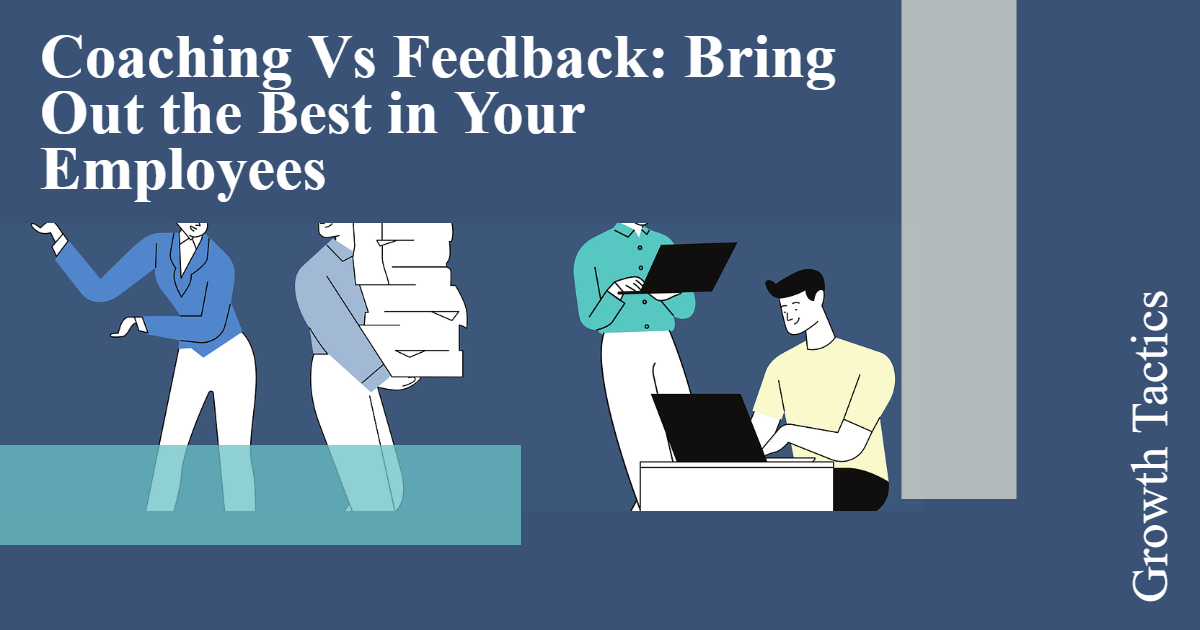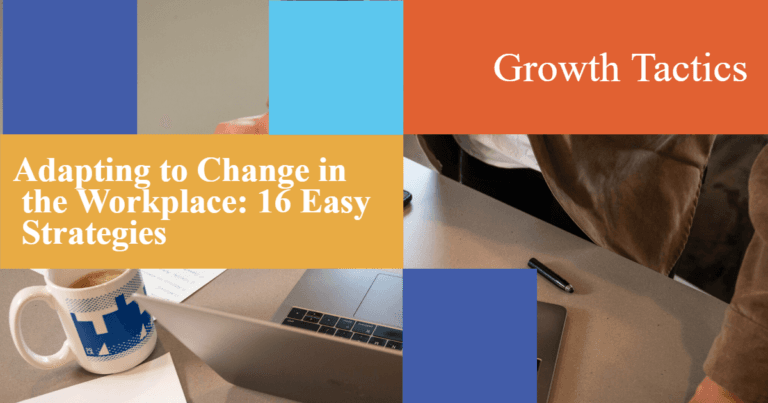I’ve been in your shoes, trying to figure out the best way to bring out the best in my team. That’s why I’m excited to share what I’ve learned about coaching and feedback.
In this article, I’ll show you how these two powerful tools can transform your leadership skills. You’ll learn the difference between coaching vs feedback, and how to use each one to help your employees shine.
Mastering these skills will make you a better leader. You’ll build stronger relationships with your team and watch their performance soar.
So, are you ready to become the leader you’ve always wanted to be? Let’s get started!
Jump To Section
What is Feedback?
Feedback is like a mirror for your employees. It shows them how they’re doing and where they can improve. When I give effective feedback, I’m helping my team see themselves more clearly.
The purpose of feedback is simple: to help people grow. It’s not about criticism or praise alone. It’s about guiding your team towards their best performance.
What Are the Different Types of Feedback?
I’ve used various types over the years, and here are the main ones:
- Positive feedback: This is when you recognize good work. It’s like giving a high-five to your team member.
- Constructive feedback: Here, you point out areas for improvement. It’s not about being negative, but about helping someone get better.
- Specific feedback: This focuses on particular actions or behaviors. It’s clear and to the point.
- General feedback: This covers overall performance. It’s like giving a report card.
- Immediate feedback: You give this right after you see something happen. It’s fresh and timely.
- Delayed feedback: Sometimes, you need time to think. This type comes after you’ve had a chance to reflect.
In the next section, I’ll show you how to give good feedback that really makes a difference. Are you ready to level up your feedback game?
How Do You Give Good Feedback?
I’ve learned that giving good feedback is an art. It takes practice, but it’s a skill every leader needs. Let’s look at some tried-and-true methods that have worked for me.
The Sandwich Method
The sandwich method is a classic for a reason.
Here’s how it works:
- Start with something positive.
- Add the constructive feedback in the middle.
- End with another positive note.
It’s like making a sandwich. The bread is the good stuff, and the meat in the middle is what needs work.
For example, I might say: “John, your report was well-organized. I’d like to see more data to support your conclusions. Your presentation skills are really improving!”
Be Specific and Actionable
Vague feedback doesn’t help anyone. I always try to be clear about what I’ve noticed.
Instead of saying “Good job,” I might say, “Your quick response to the client’s email saved the deal. That’s exactly what we need.”
Give your team member something they can act on. Don’t just point out problems, offer solutions, or ask them how they’d fix it.
Timing is Everything
When it comes to feedback, timing matters. Here’s what I’ve found works best:
- Give positive feedback right away. Don’t wait to celebrate wins.
- For constructive feedback, take a breath. Make sure you’re calm and have all the facts.
- Regular check-ins are great for ongoing feedback. I like to do this weekly with my team.
Remember, every person on your team is different. Some might prefer written feedback, others face-to-face. Get to know what works best for each of them.
Giving good feedback takes practice. But it’s worth it if you want to see your team grow and thrive.
What is Coaching?
Let’s talk about coaching. It’s a powerful tool I’ve used to help my team grow and succeed. But what exactly is it?
Coaching is like being a guide on a journey. You’re not telling people where to go. Instead, you’re helping them find their own path.
As a coach, I ask purposeful questions that make my team think. I help them discover their own strengths and solutions.
The purpose of coaching sessions is to unlock potential. It’s about helping people become the best version of themselves. When I coach, I’m not fixing problems. I’m empowering my team to solve them on their own.
What is a Coaching Mindset?
Now, let’s talk about the coaching mindset. It’s all about believing in people. I see the potential in every team member, even when they don’t see it themselves. I trust that they have the answers within them.
With a coaching mindset, I’m curious and open-minded. I listen more than I talk. I ask “What do you think?” instead of giving orders. It’s about helping people find their own way, not showing them mine.
Coaching isn’t always easy. It takes patience and practice. But I’ve seen it work wonders. It builds confidence, creativity, and problem-solving skills in my team.
As a coach, your job is to help each person shine in their own way.
Are you ready to put on your coaching hat? In the next section, I’ll share some practical tips on how to coach effectively.
How to Be a Great Coach
I’ve learned a lot about coaching over the years. Being a great coach isn’t just about giving advice. It’s about helping others find their own path. Let me share some of my best tips with you.
Active Listening: Your Secret Weapon
Active listening is key to great coaching.
Here’s what I do:
- I give my full attention. No checking emails or looking at my phone.
- I watch for body language. Sometimes what people don’t say is just as important.
- I show I’m listening with nods and small comments like “I see” or “go on.”
Remember, listening isn’t just waiting for your turn to talk. It’s about really hearing what the other person is saying.
Asking Powerful Questions
Questions are a coach’s best tool. They help people think deeper and find their own answers.
Here are some I use often:
- “What’s the real challenge here for you?”
- “What have you tried so far?”
- “If you could do anything, what would you do?”
Avoid questions that can be answered with just “yes” or “no.” The goal is to get people thinking and talking.
Setting Goals Together
Goals give direction. They help people know where they’re going.
When I set goals with my team, I follow these steps:
- I ask what they want to achieve.
- We make sure the goal is clear and measurable.
- We break big goals into smaller steps.
- We set a timeline.
Remember, the best goals are the ones people set for themselves. Your job is to guide, not decide.
Keep practicing these skills, and you’ll be a great coach in no time. Your team will thank you for it!
Feedback vs. Coaching: Spotting the Differences
I’ve learned that feedback and coaching are different tools. Both are important, but they serve different purposes.
Feedback is like a mirror. It shows people how they’re doing right now. When I give feedback, I’m telling someone about their performance or behavior.
Coaching focuses more on the journey. It’s about helping people grow and improve over time. When I coach, I’m not telling. I’m asking questions and guiding.
Understanding these differences has made me a better leader. It helps me choose the right tool for each situation.
When to Use Each Approach
Knowing when to use feedback or coaching is key. Here’s what I’ve found works best:
Use feedback when:
- You need quick results
- There’s a specific issue to address
- You want to reinforce good behavior
Use coaching when:
- You want long-term growth
- The person needs to find their own solutions
- You’re building skills or confidence
Remember, there’s no one-size-fits-all approach. Trust your gut and think about what each person needs.
Bringing It All Together: Using Feedback and Coaching in Harmony
The real magic happens when you use feedback and coaching together. Here’s how I do it:
- I start with feedback to address immediate issues.
- Then, I switch to coaching to help find long-term solutions.
- I use feedback again to celebrate progress along the way.
This combo approach works great. It fixes problems now and prevents them in the future.
Creating a Growth-Oriented Workplace Culture
A growth mindset is key to success.
Here’s how I create that culture in my workplace:
- I encourage learning from mistakes
- I praise effort, not just results
- I model continuous learning myself
Remember, culture starts at the top. As a leader, your actions set the tone for everyone else.
Tailoring Your Approach to Individual Employees
Everyone is different. What works for one person might not work for another.
Here’s how I adapt my approach:
- I get to know each team member personally
- I ask about their goals and preferences
- I adjust my style to match their needs
It takes more effort, but it’s worth it. When you tailor your approach, you get better results.
Remember, being a great leader isn’t about having all the answers. It’s about helping your team find their own path to success. Use these tools wisely, and watch your team soar!
What if You Run Into Challenges with Feedback and Coaching?
I’ve run into plenty of roadblocks in my time. But I’ve also found ways to get past them.
Here are some common challenges to feedback and coaching and how I deal with them.
Resistance to Change
Some people just don’t want to change. I get it. Change can be scary.
Here’s what I do:
- I listen to their concerns. Really listen.
- I show them the benefits of change.
- I take small steps. Big changes can be overwhelming.
Remember, you can’t force change. But you can make it less scary.
Lack of Time
We’re all busy. Finding time for coaching can be tough.
Here’s how I make it work:
- I schedule regular check-ins. Even 15 minutes can help.
- I use “coaching moments” throughout the day.
- I prioritize coaching. It’s that important.
Don’t let busy schedules stop you. Where there’s a will, there’s a way.
Difficult Conversations
Sometimes, you need to have tough talks. They’re not fun, but they’re necessary. Here’s my approach:
- I prepare. I know what I want to say.
- I start with the positive. It sets the right tone.
- I focus on the future. What can we do better next time?
Remember, it’s not about blame. It’s about growth.
Measuring Progress
How do you know if coaching is working? It’s not always easy to tell. Here’s what I look for:
• Small changes in behavior
• Increased confidence
• Better problem-solving skills
Don’t expect overnight miracles. Real growth takes time.
Coaching has its challenges, but don’t let them stop you. Keep at it. The rewards are worth it. You’re helping people grow and succeed. That’s pretty amazing, if you ask me.
Wrapping Up Our Article on Coaching vs Feedback
As we wrap up, I want to leave you with this: coaching and feedback aren’t just management tools. They’re ways to help your people shine.
I’ve seen firsthand how powerful these approaches can be. They can turn good employees into great ones. They can help struggling team members find their footing.
Remember, there’s no one-size-fits-all approach. Every person on your team is unique. They have their own strengths, challenges, and ways of learning.
Your job as a leader? It’s to figure out what each person needs. Sometimes it’s quick feedback. Other times, it’s ongoing coaching. Often, it’s a mix of both.
Don’t be afraid to try different approaches. Learn what works best for each person. And always keep your purpose in mind: to bring out the best in your employees.
You’ve got this! With the right mix of coaching and feedback, you’ll create a team that’s not just productive, but truly thriving. And that’s what great leadership is all about.








